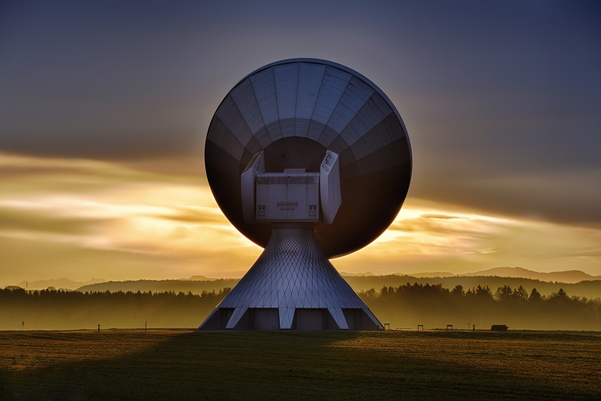CBS is experiencing some amazing growth…and a couple of serious problem. There's good news, but will it be enough to outweigh the bad news?
14 November, 2024 | Posted by:
Category: Business Internet, Cable, Entertainment, News, Streaming, TV | No Comments

CBS, a major player in the broadcasting industry, continues to evolve and adapt in response to the rapidly changing media landscape. Here's what you need to know about CBS in 2024:
CBS has significantly expanded its local news service, CBSN Local, which is now available in more markets. This service is aimed at providing market-specific streaming news for cord-cutters who prefer getting their news online. The integration of CBSN Local into the broader CBS All Access platform has made it easier for users to access both national and local news content seamlessly.
The combined subscriber base for CBS All Access and Showtime continues to grow robustly. With the increasing demand for streaming services, CBS has strategically positioned these platforms to capture a larger share of the market. The company's original content, including new seasons of popular shows and exclusive programming, has been a significant driver of this growth.
Star Trek: Discovery, a flagship series on CBS All Access, remains a cornerstone of the platform's original content. Fans can look forward to new storylines and possibly more spin-offs within the Star Trek universe. However, the long-awaited return of Avery Brooks as Captain Benjamin Sisko from Star Trek: Deep Space Nine remains uncertain, much to the disappointment of loyal fans.
CBS has undergone significant leadership changes in recent years. The network has been working to rebuild its reputation and address internal challenges, including those stemming from previous allegations against former executives. These changes are part of CBS’s broader strategy to foster a more inclusive and transparent corporate culture.
CBS is navigating through a dynamic media landscape by expanding its local news services, growing its streaming platforms, and continuously delivering compelling content. Despite some leadership challenges, CBS remains committed to evolving with the industry and meeting the needs of its audience.
Why would Walmart compete against Amazon? They’re both large companies that make a good profit, so why compete? And why would it be good for You?
23 October, 2024 | Posted by:
Category: Business Internet, News, Service Providers, Technology | No Comments

In the battle between retail giants Walmart and Amazon, consumers stand to benefit from the fierce competition. Here's an updated look at how these two companies are shaping up in 2024 and what it means for you.
Amazon:
Walmart:
Amazon:
Walmart:
Amazon:
Walmart:
Amazon:
Walmart:
The competition between Walmart and Amazon is intensifying, and consumers are the ultimate winners. Both companies are investing heavily in technology and innovation to enhance the shopping experience, offering competitive prices, and expanding their delivery options. As they continue to push each other to new heights, shoppers can expect more convenience, better deals, and improved services.
Researching for an article, though necessary, is tedious and at times mind-numbing. Google's going to help out with a new data journalism feature.
14 November, 2024 | Posted by:
Category: Apps, Business Internet, News, Reviews, Technology | No Comments

Researching for articles is an integral part of my job. Searching through data is key to providing quality content. Google aims to help with a new data journalism feature.
Google's new feature highlights relevant data within articles, listing them above the title as a preview, potentially saving significant research time. Here are the pros and cons of this new feature:
Google proposes highlighting relevant data within articles and listing them above the title. This preview helps researchers quickly assess the relevance of content, saving significant time. The preview feature could eliminate the frustration of reading through irrelevant articles, making research more efficient.
The feature will help refine search criteria by presenting more targeted data previews. This assists in identifying the right datasets more quickly, reducing the trial-and-error approach often used in research. Researchers can enter more precise search terms, streamlining the research process.
Having humans review data previews can lead to misinterpretation. Without full context, data can be misunderstood, potentially leading to incorrect conclusions. While professionals also make mistakes, relying solely on previews might increase the risk of errors.
Dense academic reports with complex language may challenge Google's algorithm. The feature might struggle with parsing and summarizing intricate data, which could limit its effectiveness. Google's ability to handle such reports will be crucial in determining the feature's overall success.
Google's developers are preparing for this feature by encouraging published articles to be easily identifiable for data extraction. Authors are advised to prepare their data in structured formats, such as tables, CSV files, or structured objects, to aid Google's algorithms in recognizing and presenting relevant data.
Conducting research is daunting but necessary for quality journalism. Google's new feature aims to ease the burden by providing quick data previews, although it has its drawbacks. Researchers will need to balance the convenience of previews with the need for comprehensive analysis. As the feature evolves, it holds the potential to significantly enhance the research process, making it a valuable tool for journalists and researchers alike.
Theaters have been steadily losing to streaming services. Now big movies are coming to streaming services. Here's three ways theaters they can compete.
20 December, 2024 | Posted by:
Category: Business Internet, Entertainment, News, Streaming, TV | No Comments

As streaming services like Netflix continue to dominate, theaters must find innovative ways to compete and draw audiences back to the big screen. Here are three strategies that theaters can employ to stay relevant:
Theaters should embrace the evolution of media consumption by integrating streaming services into their business model. This could involve hosting special screenings of popular streaming content, offering exclusive theater-to-streaming experiences, or partnering with streaming platforms to create unique viewing events. By combining the convenience of streaming with the immersive experience of the theater, they can attract a wider audience.
Theater chains need to negotiate better terms with Hollywood studios to reduce the high percentage of ticket sales that go to the studios. By achieving more favorable revenue-sharing agreements, theaters can lower ticket prices and concession costs, making a night out at the movies more affordable and appealing. Additionally, offering loyalty programs, discounts, and promotions can help draw in cost-conscious moviegoers.
Innovation is key to differentiating the theater experience from home viewing. Theaters can enhance the movie-going experience by offering amenities such as luxury seating, gourmet food options, and premium formats like IMAX and 4DX. Interactive and immersive experiences, such as "Flick-Syncs," where audiences participate in live-action versions of their favorite scenes, can turn movie-watching into a memorable event. Additionally, hosting themed events, film festivals, and educational screenings can attract diverse audiences and create a sense of community.
Creating a sense of community and offering a unique experience are crucial for theaters to remain competitive. By hosting events that bring people together, such as Q&A sessions with filmmakers, community fundraisers, or special interest group screenings, theaters can become cultural hubs that offer more than just movies. This sense of belonging and the opportunity for social interaction are advantages that streaming services cannot replicate.
Incorporating the latest technology can also enhance the theater experience. High-quality projection systems, superior sound, and comfortable seating can make a significant difference. Offering mobile apps for easy ticket booking, personalized recommendations, and loyalty rewards can streamline the customer experience and build long-term relationships with patrons.
Theater chains must adapt to the changing landscape by embracing streaming, negotiating better terms with studios, and innovating to offer unique and memorable experiences. By focusing on community, technology, and enhanced amenities, theaters can create compelling reasons for audiences to choose the big screen over their living rooms.
As cool as satellite internet is, there are a lot of complaints with it. But what if there was better technology? What if it wasn't about technology at all?
25 October, 2024 | Posted by:
Category: Business Internet, News, Internet, Technology | No Comments

As cool as satellite internet is, there are many complaints about its reliability and speed. However, with advancements in technology and new strategies, the future of satellite internet looks promising. Here are three key factors that will shape its future:
To improve satellite internet, there needs to be a well-structured infrastructure. Companies like SpaceX with its Starlink project, and Amazon with Project Kuiper, are developing extensive networks of low Earth orbit (LEO) satellites to provide more reliable and faster internet. These LEO satellites reduce latency and improve signal strength by being closer to Earth compared to traditional geostationary satellites.
Early adopters play a crucial role in the success of new technologies. These are the individuals and organizations willing to test and refine satellite internet systems despite initial bugs and challenges. Their feedback and usage help improve the technology, making it more reliable and appealing to a broader audience.
Effective marketing is essential for the widespread adoption of satellite internet. Companies need to clearly communicate the benefits of their services, such as faster speeds, lower latency, and wider coverage, especially in rural and underserved areas. Highlighting successful case studies and user testimonials can also drive adoption.
Weather and Geography: Satellite internet faces challenges from weather conditions and geographical obstructions. LEO satellites aim to mitigate these issues by providing multiple paths for signal transmission, reducing the impact of weather and obstacles.
Signal Strength: Improving signal strength and reducing latency are critical. LEO satellites orbiting closer to Earth can provide stronger signals and faster data transmission compared to traditional satellites.
SpaceX: With its ambitious Starlink project, SpaceX plans to deploy thousands of LEO satellites to provide global high-speed internet coverage. This network aims to offer competitive speeds and lower latency.
Amazon's Project Kuiper: Similar to Starlink, Amazon's Project Kuiper aims to launch a constellation of LEO satellites to deliver high-speed internet worldwide. The project focuses on serving rural and remote areas with limited connectivity options.
OneWeb: Another key player, OneWeb, is building a network of LEO satellites to offer broadband services globally. Their focus is on creating a robust and scalable satellite internet infrastructure.
The future of satellite internet hinges on creating a viable infrastructure, attracting early adopters, and effective marketing. With companies like SpaceX, Amazon, and OneWeb leading the charge, satellite internet has the potential to revolutionize connectivity, especially in rural and underserved areas. As technology advances and networks expand, satellite internet will become a more reliable and competitive option for high-speed internet access.
For more detailed information, visit the full blog post on Konecteaze.